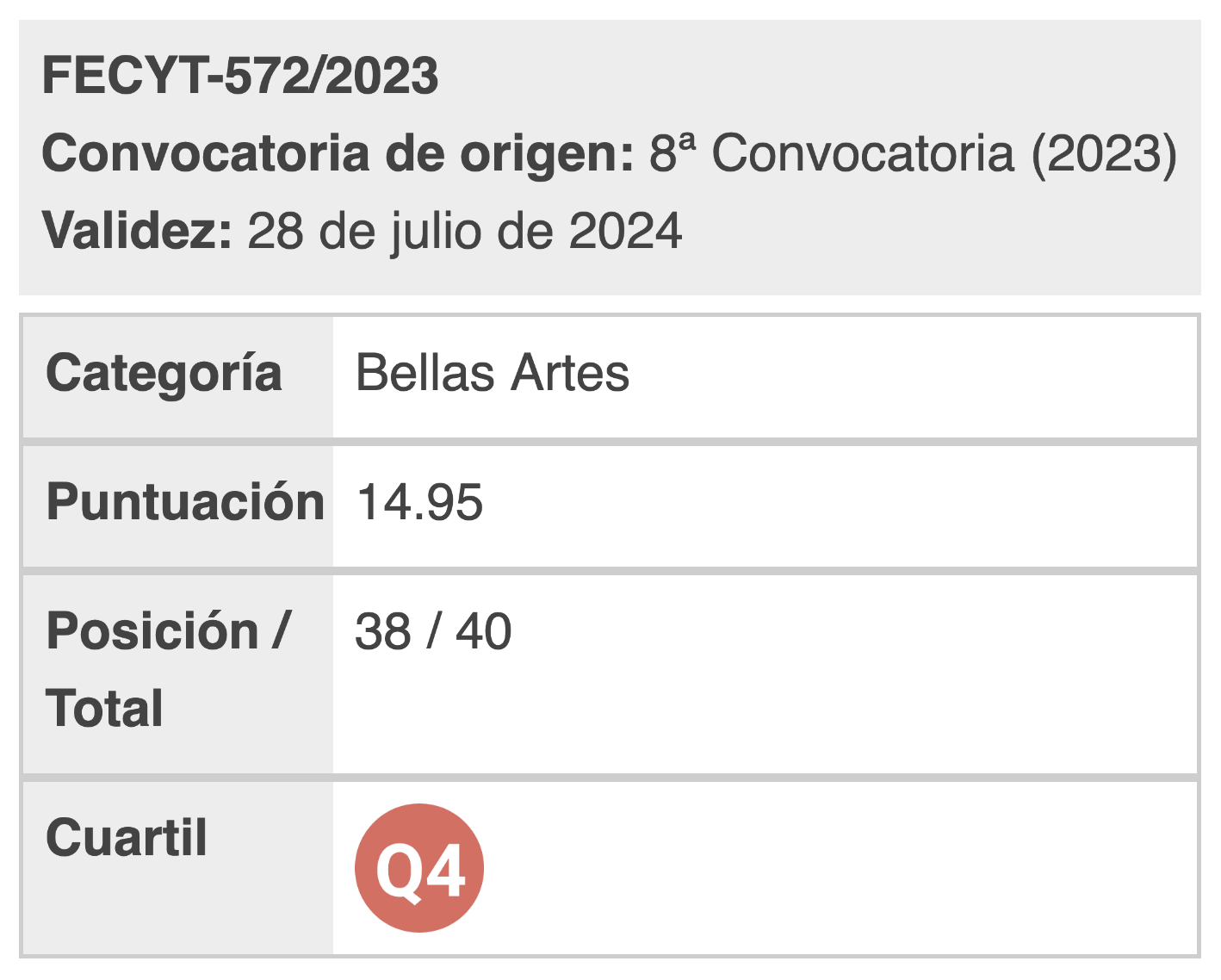Explicación de la cultura de Pantalla
Historia de la formación y formas de constitución cultural
Palabras clave:
cultura de la pantalla, cine, ordenador, televisión, teléfono inteligente, interactividad, medio de pantalla, hombre digitalResumen
La pantalla se está convirtiendo rápidamente en el modo dominante de la cultura moderna, actuando como una herramienta tecnológica, un medio y un entorno especial, a su manera único, para la existencia humana multidimensional. Esto actualiza el estudio de la génesis de la cultura de la pantalla, el contenido y la evolución de los formatos de su representación tanto en la estructura de la vida cotidiana humana como en el continuo histórico de la cultura.
Los métodos de investigación incluyen lo siguiente: la metodología del evolucionismo, los métodos semiótico-culturales y comparativos, que permiten rastrear la génesis de la cultura de la pantalla y comparar varias formas de cultura de la pantalla; y el método tipológico y el enfoque sistemático, que permitieron sistematizar las formas de cultura de la pantalla y revelar los principios de su distinción.
El artículo identifica cuatro formatos principales de pantalla: cinematográfico, televisivo, informático y móvil-smartphone. Se revelará la aceleración de la dinámica de proyección de muchas esferas culturales y la formación de un continuo cultural especial, donde se proyectan todas las actividades sociales y personales tradicionales, creando un espacio de nueva autenticidad y mitología.
Citas
Aarseth, E.J. (1997). Cybertext: Perspectives on Ergodic Literature. Baltimore.
Adorno, T., Horkheimer M. (1969). Dialektik der Aufklaerung: Philosophische Fragmente. Frankfurt.
Babinovich, V.S. (2019). Identity of a gamer in the virtual space of video games. Bulletin of the Tomsk State University, no. 446, pp. 64-67. (In Russ)
Bartel, C. (2013). Free will and moral responsibility in video games. Ethics and Information Technology, vol. 17, iss. 4, pp. 285-293.
Baudrillard, J. (1976). L'échange symbolique et la mort. Collection Bibliothèque des Sciences humaines, Gallimard.
Baudrillard, J. (1981). Simulacres et Simulation. Paris: Galilée.
Burdea, G., Goiffet, P. (2003). Virtual Reality Technology. NY., 199 p.
Castells, M. (2004). The Internet Galaxy. Oxford University Press. 306 p.
Castillo Levicoy, C. N., Pérez Lira, C., & Álvarez Gómez, N. (2024). Video mapping as an artistic expression in the enhancement of buildings of historical and heritage interest, Aysén region, Chile. ASRI. Art and Society. Journal for Research in Arts and Digital Humanities, (25), 119–132. https://doi.org/10.33732/ASRI.6554
Deleuze, G. (1986). Cinema. University of Minnesota Press. 264 p.
Dunn, J. (2012). Virtual worlds and moral evaluation. Ethics and Information Technology, vol. 14, iss. 4, pp. 255-265. DOI: https://doi.org/10.1007/s10676-012-9298-6
Foucault, P.-M. (1975). Surveiller et punir. Naissance de la prison, Paris, Gallimard, 328 p.
Gere, Ch. (2012). Genealogy of the computer screen. Screen culture. Theoretical problems, pp. 38-54. (In Russ)
Goerger, M. (2017). Value, violence, and the ethics of gaming. Ethics and Information Technology, vol. 19, iss. 2, pp. 95-105. DOI: https://doi.org/10.1007/s10676-017-9417-5
Guins, R. (2014). Game After: A Cultural Study of Video Game Afterlife. Game After: A Cultural Study of Video Game Afterlife, pp. 1-355.
Holt, R. (2000). Examining video game immersion as a flow state. Washington.
Huhtamo, E. (2012). Elements of screenology: to the problem of media archeology. Screen culture. Theoretical problems, pp. 116-174. (In Russ)
Kirillova, N.B. (2008). Media culture: theory, history, practice. Moscow. 496 p. (In Russ)
Kirillova, N.B. (2018). The Transformation of Screen Culture as a Phenomenon of Information Age. KnE Engineering, vol. 3, iss. 8, pp.128-133.
Kondakov, I.V. (2014). Screen and "book" text: depth of interpretation. Science of television, iss. 11, pp. 191-197. (In Russ)
Lévi-Strauss, C. (1958). Anthropologie structurale. Paris, 454 p.
Lotman, Y., Tsivyan, Y. (1994). Dialogue with the screen. Tallinn. 215 p. (In Russ)
Luhmann, N. (2004). Die Realität der Massenmedien. Wiesbaden.
Manovich, L. (2012). Archeology of the computer screen. Screen culture. Theoretical problems, pp. 55-76. (In Russ)
Manovich, L. (2001). The Language of New Media. Cambridge.
Marcuse, H. (1964). One-Dimensional Man. Beacon Press. 257 p.
McLuhan, M. (2002). The Gutenberg Galaxy: The Making of Typographic Man. Toronto: University of Toronto Press.
McLuhan, M. (1964). Understanding Media: The Extensions of Man. N.Y.: McGraw Hill.
Meskin, A., Robson, J. (2016). Video Games as Self-Involving Interactive Fictions. Journal of Aesthetics and Art Criticism, no. 74 (2), pp. 165-177. DOI: https://doi.org/10.1111/jaac.12269
Mikhalovich, V. (2012). Television time. Screen culture. Theoretical problems, pp. 226-251. (In Russ)
Mitchell, W.J.T. (1995). Interdisciplinarity and Visual Culture. Art Bulletin, vol. 77, no. 4. pp. 540-544.
Navas López, F., & Galiano-Díaz, J. C. (2024). The cuplé La Violetera in international cinema: from the theatre to the big screen. ASRI. Art and Society. Journal for Research in Arts and Digital Humanities, (25), 161–175. https://doi.org/10.33732/ASRI.6557
Ogurchikov, V.P. (2007). Screen culture and modern communicative space. Humanities and socio-economic sciences, no. 2, pp. 113-116. (In Russ)
Patridge, S.L. (2017). Video Games and Imaginative Identification. Journal of Aesthetics and Art Criticism, vol. 75, iss. 2, pp. 181-184. DOI: https://doi.org/10.1111/jaac.12355
Piskunova, S.I., Eliseeva, O.R. (2015). Screen сulture in the space of modern mediaculture. Context and Reflection: Philosophy of the World and Human Being, vol. 6, pp. 183-191.
Razgolov, K. (2012). Screen as a meat grinder of screen discourse. Screen culture. Theoretical problems, pp. 9-37. (In Russ)
Sergeeva, O. (2012). Computer screen as an element of everyday life at home. Screen culture. Theoretical problems, pp. 274-298. (In Russ)
Shaw, A. (2010). What Is Video Game Culture? Cultural Studies and Game Studies. Games and Culture, vol. 5, no. 4, pp. 403-424.
Tarasov, A.N. (2016). The screen type of the cultural code as a semiotic characteristic of the modern stage of socio-cultural transformation: cultural-philosophical analysis. Society: philosophy, history, culture, no. 12. pp. 54-56. (In Russ)
Toffler, A. (1970). Future Shock. New York: Random House, 505 p.
Yampolsky, M. (1993). The Visible World. Essays on Early Cinema Phenomenology. Moscow. (In Russ)
Young, G. (2016). Violent video games and morality: a meta-ethical approach. Ethics and Information Technology, vol. 17, iss. 4, pp. 311-321. DOI: https://doi.org/10.1007/s10676-016-9386-0
Descargas
Publicado
Cómo citar
Número
Sección
Licencia

Esta obra está bajo una licencia internacional Creative Commons Atribución 4.0.
Usted es libre de:
- Compartir — copiar y redistribuir el material en cualquier medio o formato
- Adaptar — remezclar, transformar y crear a partir del material
- para cualquier finalidad, incluso comercial.
- Reconocimiento — Debe reconocer adecuadamente la autoría, proporcionar un enlace a la licencia e indicar si se han realizado cambios<. Puede hacerlo de cualquier manera razonable, pero no de una manera que sugiera que tiene el apoyo del licenciador o lo recibe por el uso que hace.
- No hay restricciones adicionales — No puede aplicar términos legales o medidas tecnológicas que legalmente restrinjan realizar aquello que la licencia permite.
























